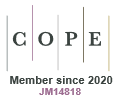Mesoscale modelling of two 'drying events': governing processes and implications for fire danger
R. L. Badlan, T.P. Lane, G.A. Mills and S. Caine
Australian Meteorological and Oceanographic Journal
62(3) 143 - 156
Published: 2012
Abstract
This study uses mesoscale modelling to examine the processes underlying two ‘drying events’ and their implications for fire danger. Both events occurred in Gippsland, Victoria, Australia, in the lee of the Great Dividing Range, and the role of terrain-induced flows in causing the events is one underlying focus. The Weather Research and Forecasting (WRF) model is used in a nested configuration; the highest resolution domain has horizontal grid spacing equal to 1.5 km. The WRF model simulations identify that the first event (29 December 2001) is caused by a regime transition from blocked to unblocked flow, with the cross-mountain flow bringing warmer and drier conditions. The second event (29 May 2007) is related to enhanced downslope flow. Simulations of both events also elucidate important mesoscale processes, namely ‘streamers’ and lee waves, that cause significant perturbations in the fire danger in the lee of the mountains.https://doi.org/10.1071/ES12020
© Commonwealth of Australia represented by the Bureau of Meterology 2012. This is an open access article distributed under the Creative Commons Attribution-NonCommerical-NoDerivatives 4.0 International License (CC BY-NC-ND).

